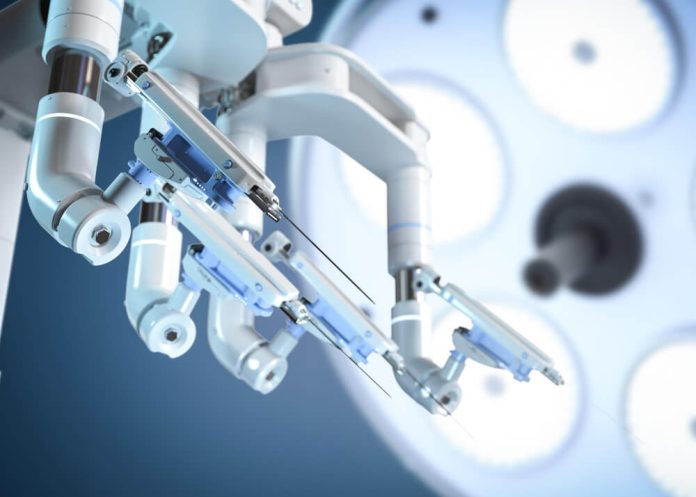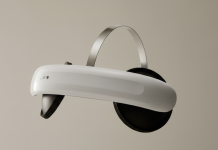Capstan Medical has made a significant breakthrough in the treatment of heart valve disease by using a surgical robot to perform mitral valve replacements in two patients. This achievement marks a major advancement in the field of structural heart disease, opening up new opportunities for patients who have been excluded from existing treatment options due to anatomical constraints.
A New Approach to Mitral Valve Replacement
Heart valve disease is a condition that impacts millions of people worldwide, with many facing limited options for treatment. Traditional procedures, such as open-heart surgery, often exclude a significant number of patients, especially those with complex anatomical challenges.
Capstan Medical, a Santa Cruz, California-based startup, is addressing this issue with a revolutionary solution: a robotic-assisted platform for mitral valve replacement that makes the procedure minimally invasive.
The company’s new system combines a valve implant, catheter, and robotic delivery platform, aiming to expand access to life-saving treatment for valve disease. CEO Maggie Nixon believes there is a need for more percutaneous, minimally invasive options, thereby enhancing treatment options.
A Leap Forward for Mitral Regurgitation Treatment
The first two patients in Capstan’s human trial have already been successfully treated for mitral regurgitation, a condition in which the heart’s mitral valve fails to close properly, causing blood to leak back into the heart. These patients, who were previously considered ineligible for other treatments, were successfully implanted with Capstan’s mitral valve replacement devices.
Their breakthrough in mitral and tricuspid valve treatments is significant in a market where aortic valve treatments have been slower to progress. Major players like Edwards Lifesciences and Medtronic have transitioned from open-heart surgery to transcatheter replacements, but mitral and tricuspid valve treatments have been more challenging due to their complex anatomy.
More than 80% of patients who seek mitral valve replacement with current investigational devices are excluded because of anatomical constraints. Capstan aims to change this by offering a treatment solution that is both effective and accessible.
Addressing Anatomical Challenges
One of the significant obstacles in treating mitral valve disease is the potential obstruction of the cardiac outflow tract, which is responsible for pushing blood out of the heart and into the body. This obstruction can exclude many patients from treatment options.
Capstan’s design addresses this issue by creating a compact valve that does not block the outflow tract, a feature that enhances the safety and efficacy of the procedure.
In addition to the compact design, Capstan’s valve delivery catheter boasts a wide range of motion, which is essential for precise placement in a beating heart. Nixon likens the delivery system to a capstan on a sailboat, a mechanism that ensures slow and controlled deployment. This level of precision is critical for the success of the procedure.
Robotic Assistance for Precision and Stability
Capstan’s surgical robot is designed to provide stability and control during the valve placement process. Mounted to the surgical table, the robot allows the surgeon to navigate the valve placement with unparalleled precision. The simplicity of the robot is one of its greatest advantages, especially when working with the delicate environment of a beating heart.
Nixon, a former executive at Intuitive Surgical, highlighted the robot’s precision in positioning valves in a beating heart, ensuring patient safety and well-being, highlighting the importance of stability in operating procedures.
Successful Trials and Future Goals
The first procedures using Capstan’s surgical robot were performed at Hospital Clínico Universidad Católica in Santiago, Chile. Both patients showed significant improvement, with complete elimination of mitral regurgitation and unobstructed left ventricular outflow tracts. These patients were discharged just days after the procedure, feeling much better than when they arrived.
This success has been met with enthusiasm from the medical community. Dr. Santiago Garcia, director of the structural heart program at The Christ Hospital in Cincinnati, praised the technology, calling it “the enabling technology the structural heart field has been waiting for.”
With $110 million in funding from investors such as Intuitive Ventures, Capstan is now focusing on advancing its system toward a pivotal trial, which will be used for an FDA submission. The company aims to bring its valve system to market by 2028, providing a new option for patients who were previously left without treatment alternatives.
Conclusion
Capstan Medical’s surgical robot and innovative valve implant platform represent a major leap forward in the treatment of mitral valve disease. By offering a minimally invasive, precise, and effective solution, Capstan is addressing a critical gap in heart valve disease treatment.
With the potential to help a broader range of patients, this breakthrough technology could transform the field and offer new hope for those suffering from heart valve conditions. Stay tuned for more advancements as Capstan moves closer to FDA approval and makes its life-saving technology available to patients worldwide.
I hope you find the above content helpful. For more such informative content, please visit Medtechreporter.











